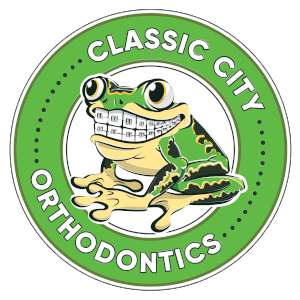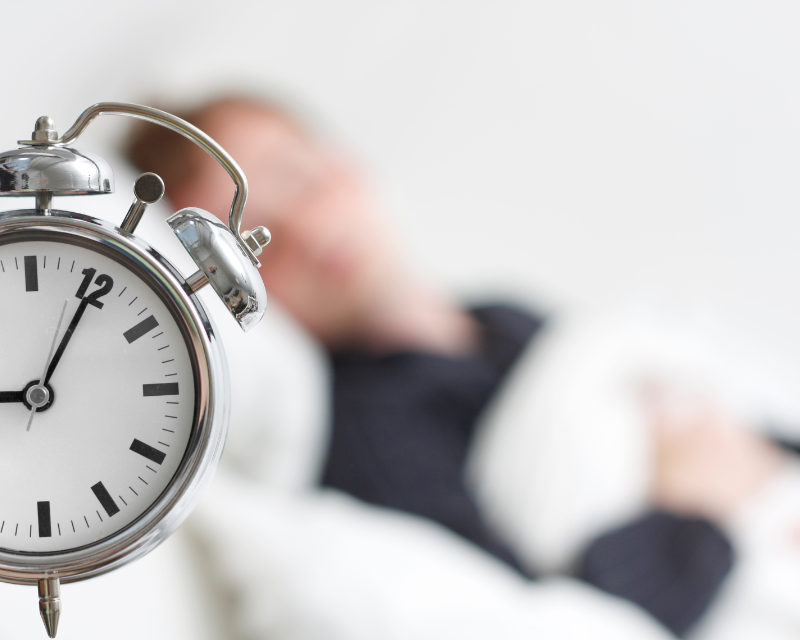Sleep apnea is a common yet serious condition that disrupts millions of lives, leading to restless nights, daytime fatigue, and long-term health risks. While many associate orthodontics with achieving a perfect smile, fewer realize its powerful role in addressing sleep apnea. By correcting jaw alignment, expanding airways, and improving oral health, orthodontics for sleep apnea offers a transformative, non-invasive solution to enhance breathing and promote restful sleep. In this blog, we’ll uncover how orthodontics can improve sleep apnea, explore its benefits, and explain why it’s a game-changer for those seeking better sleep with orthodontics.
What Is Sleep Apnea and Why Does It Matter?
Sleep apnea is a sleep disorder characterized by repeated pauses in breathing during sleep, often caused by airway obstruction. The most prevalent type, obstructive sleep apnea (OSA), occurs when the throat muscles relax excessively or anatomical factors, like a narrow airway, block airflow. Common symptoms include loud snoring, gasping for air, morning headaches, irritability, and excessive daytime sleepiness.
Left untreated, sleep apnea can lead to serious health complications, including hypertension, heart disease, stroke, diabetes, and cognitive issues. Beyond physical health, it affects mental well-being, productivity, and relationships, making effective treatment essential. Fortunately, orthodontic treatment for sleep apnea addresses underlying structural issues, offering a path to improved sleep and overall health.
The Link Between Orthodontics and Sleep Apnea
You might wonder, “How can orthodontics, known for straightening teeth, help with sleep apnea?” The answer lies in the intricate relationship between oral anatomy and airway function. Orthodontists specialize in correcting misaligned teeth, jaws, and other structural issues that can narrow the airway and contribute to sleep apnea. By addressing these factors, orthodontics for sleep apnea can reduce airway obstructions, improve breathing, and enhance sleep apnea and oral health outcomes.
For example, a misaligned jaw or crowded teeth can push the tongue backward, obstructing the airway during sleep. Orthodontic interventions, such as braces for sleep apnea, aligners for sleep apnea, or mandibular advancement devices, reposition these structures to keep the airway open. This not only alleviates sleep apnea symptoms but also promotes healthier oral function.
How Orthodontics Can Improve Sleep Apnea
Orthodontic treatments target the root causes of airway obstruction, offering tailored solutions for patients with mild to moderate sleep apnea. Below, we explore the key ways orthodontics for sleep apnea can transform your sleep and health.
- Correcting Jaw Misalignment for Optimal Airway Flow
A misaligned jaw, such as an overbite, underbite, or retrognathia (a recessed lower jaw), can narrow the airway by positioning the tongue and soft tissues in a way that obstructs breathing. Orthodontic treatments like braces for sleep apnea or Invisalign for sleep apnea gradually reposition the jaw to create a more open airway. For instance, advancing the lower jaw (mandibular advancement) prevents the tongue from collapsing backward, a common cause of airway blockage in OSA patients.
By improving jaw alignment, orthodontic treatment for sleep apnea reduces the frequency and severity of breathing interruptions, leading to better sleep with orthodontics and less snoring, benefiting both the patient and their sleep partner.
- Expanding the Palate to Widen the Airway
A narrow upper jaw or palate can restrict airflow, increasing the risk of sleep apnea. Orthodontic appliances like palatal expanders for sleep apnea are designed to widen the upper jaw, creating more space for the tongue and soft tissues. This expansion reduces airway resistance, making it easier to breathe during sleep.
Palatal expanders are especially effective for children and teens, whose jaws are still developing, but adults can also benefit, particularly when combined with other sleep apnea treatment options like CPAP or oral appliances. By addressing a narrow palate, orthodontics can significantly alleviate sleep apnea symptoms and improve sleep apnea and oral health.
- Mandibular Advancement Devices: A Non-Invasive Solution
For patients with mild to moderate sleep apnea, mandibular advancement devices (MADs) are a popular orthodontic solution. These custom-fitted appliances, similar to mouthguards, hold the lower jaw and tongue forward during sleep, preventing the airway from collapsing. MADs are an effective alternative to CPAP machines, which some patients find bulky or uncomfortable.
Orthodontists work closely with sleep specialists to design MADs that fit comfortably and address the patient’s unique oral anatomy. This personalized approach ensures maximum effectiveness, making orthodontics for sleep apnea a convenient and patient-friendly option.
- Addressing Crowded Teeth and Bite Issues
Crowded teeth or a misaligned bite can contribute to sleep apnea by affecting the tongue’s position and narrowing the airway. For example, a crowded dental arch may force the tongue backward, obstructing airflow. Orthodontic treatments like braces for sleep apnea or Invisalign for sleep apnea correct these issues, creating a balanced oral structure that supports proper breathing.
In addition to improving airway function, correcting crowded teeth enhances sleep apnea and oral health, reducing the risk of cavities, gum disease, and other complications associated with poor dental alignment.
- Supporting Multidisciplinary Sleep Apnea Treatment
Orthodontics is often part of a comprehensive sleep apnea treatment plan, working alongside sleep specialists, ENT doctors, and other healthcare providers. For example, orthodontic interventions may be combined with lifestyle changes (e.g., weight loss), CPAP therapy, or surgical options for severe cases. This collaborative approach ensures that all aspects of sleep apnea are addressed, maximizing outcomes for patients seeking better sleep with orthodontics.
The Connection Between Sleep Apnea and Oral Health
The relationship between sleep apnea and oral health is bidirectional. Structural issues like a narrow palate or misaligned jaw can exacerbate sleep apnea, while untreated sleep apnea can harm oral health. For instance, mouth breathing, common in sleep apnea patients, can cause dry mouth, increasing the risk of tooth decay and gum disease. By addressing these issues through orthodontic treatment for sleep apnea, patients can achieve better sleep and maintain healthier teeth and gums.
Children with sleep apnea may show signs like mouth breathing, snoring, or behavioral issues, which can be linked to orthodontic problems. Early intervention with orthodontics for sleep apnea can prevent these issues from progressing and support healthy development.
Benefits of Orthodontic Treatment for Sleep Apnea
Choosing orthodontics for sleep apnea offers a range of benefits that extend beyond improved breathing:
- Improved Sleep Quality: By reducing airway obstructions, orthodontic treatments promote deeper, more restorative sleep.
- Increased Energy and Focus: Better sleep reduces daytime fatigue, enhancing productivity and mental clarity.
- Reduced Health Risks: Managing sleep apnea lowers the risk of heart disease, stroke, diabetes, and other complications.
- Non-Invasive Approach: Treatments like mandibular advancement devices or palatal expanders for sleep apnea are less invasive than surgery, offering comfort and convenience.
- Enhanced Oral Health: Correcting misaligned teeth or jaws improves sleep apnea and oral health, reducing the risk of dental issues.
- Better Quality of Life: Restful sleep improves mood, relationships, and overall well-being.
Who Can Benefit from Orthodontics for Sleep Apnea?
Orthodontic treatment for sleep apnea is suitable for both adults and children, particularly those with mild to moderate OSA. Ideal candidates include:
- Individuals with jaw misalignment, crowded teeth, or a narrow palate.
- Patients seeking alternatives to CPAP machines due to discomfort.
- Children exhibiting signs of sleep apnea, such as snoring or mouth breathing.
- Adults looking for non-surgical solutions to manage sleep apnea symptoms.
A comprehensive evaluation by an orthodontist and sleep specialist, often involving a sleep study or imaging, determines if orthodontics for sleep apnea is appropriate. This ensures a tailored treatment plan that addresses the patient’s specific needs.
Why Orthodontics Is a Smart Choice for Sleep Apnea
Unlike surgical interventions, orthodontics for sleep apnea offers non-invasive, customizable solutions that prioritize patient comfort. Treatments like Invisalign for sleep apnea, braces for sleep apnea, or mandibular advancement devices are designed to fit seamlessly into your lifestyle while addressing the root causes of airway obstruction. Regular follow-ups with an orthodontist ensure ongoing adjustments for optimal results, making orthodontics a long-term investment in better sleep with orthodontics and overall health.
Discover Better Sleep with Classic City Orthodontics
If sleep apnea is disrupting your life or that of a loved one, orthodontics for sleep apnea could be the solution you’ve been searching for. At Classic City Orthodontics, our board-certified orthodontists specialize in creating personalized treatment plans that address both functional and aesthetic concerns, including sleep apnea. Using advanced technology and a patient-centered approach, we help you achieve better sleep with orthodontics, improved oral health, and a higher quality of life.
Don’t let sleep apnea keep you from feeling your best. Schedule a consultation with Classic City Orthodontics today to explore how orthodontic treatment for sleep apnea can transform your health. Our expert team is dedicated to guiding you toward restful nights and vibrant days. Contact us now to take the first step!
Frequently Asked Questions (FAQs) about Orthodontics and Sleep Apnea
- How does orthodontics help with sleep apnea?
Orthodontics for sleep apnea addresses structural issues like misaligned jaws, narrow palates, or crowded teeth that contribute to airway obstruction. Treatments like braces for sleep apnea, Invisalign for sleep apnea, or mandibular advancement devices open the airway, reducing breathing interruptions and improving sleep with orthodontics.
- What orthodontic treatments are available for sleep apnea?
Common options include mandibular advancement devices (MADs), palatal expanders for sleep apnea, braces for sleep apnea, and Invisalign for sleep apnea. These treatments correct anatomical issues to enhance airflow and support sleep apnea and oral health.
- Can children benefit from orthodontic treatment for sleep apnea?
Yes, children with sleep apnea, often caused by a narrow palate or jaw issues, can benefit from early intervention with palatal expanders for sleep apnea or braces for sleep apnea. Early treatment promotes healthy development and prevents worsening symptoms.
- How long does it take to see results from orthodontic treatment for sleep apnea?
Results vary by treatment and severity. Mandibular advancement devices may improve sleep within weeks, while braces or Invisalign for sleep apnea may take months to fully correct jaw alignment and optimize airway function.
- Do I need a sleep study before orthodontic treatment for sleep apnea?
A sleep study is often recommended to diagnose sleep apnea and assess its severity. Your orthodontist will collaborate with a sleep specialist to determine if orthodontics for sleep apnea is suitable for you.
- Are mandibular advancement devices comfortable?
Yes, mandibular advancement devices are custom-designed for comfort and fit. While an adjustment period may be needed, most patients find them more tolerable than CPAP machines for sleep apnea treatment.
- Can orthodontics completely cure sleep apnea?
Orthodontic treatment for sleep apnea can significantly reduce symptoms, especially in mild to moderate cases, but may not fully cure severe OSA. It’s often part of a comprehensive sleep apnea treatment plan, including CPAP or lifestyle changes.
With orthodontics for sleep apnea, you’re not just improving your sleep—you’re investing in your long-term health and well-being. Contact Classic City Orthodontics today to start your journey to better sleep with orthodontics!

